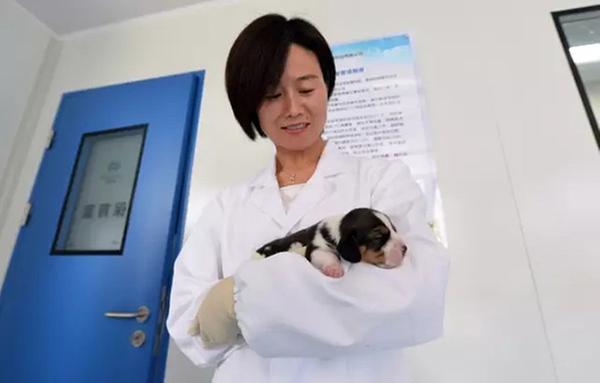China produces world's first cloned dog using gene editing

 |
The mother dog feeds the puppy Longlong.[Photo from web] |
Already home to the world's first cloned dog using somatic cell transfer technique, China is now the world's first country to clone a dog using gene editing, after Sinogene, a Beijing-based biotech company, announced the achievement on July 5, Science and Technology reported.
China is the second country to master somatic cell cloning technology, followed by South Korea, according to Lai Liangxue, a researcher at the Guangzhou Institute of Biomedicine and Health under the Chinese Academy of Sciences.
Dog cloning has always been regarded in the scientific community as the most difficult, despite multiple successes in the cloning other mammals, including sheep, mice, cows, and pigs. Poor oocyte quality and the asynchronous reproduction cycle of the surrogate mother and the cloned embryo limit the application of the technology.
However, Lai's team of scientists at Sinogene created a disease model using the latest gene-editing technology CRISPR/Cas9 to achieve mass production. It is the first of its kind in the world.
"It is advantageous to combine cloning technology with gene editing, and China has taken the lead," said a researcher from the Institute of Zoology under the Chinese Academy of Sciences.
The company said it will promote commercial dog cloning services worldwide by establishing a gene-editing development and research base and a bank for somatic cells and genes.
 |
A scientist shows the cloned dog Longlong.[Photo from web] |
- Police punish shopper after AI video used in fake crab claim
- Historians identify Chinese pilot saved by John Rabe in Nanjing
- Rainforest-themed activities launched in Hainan
- Hebei advances intelligent construction and prefabricated housing
- Seventh Hainan Island International Film Festival opens in Sanya
- Former chairman of Guangxi government expelled from CPC, public office





































